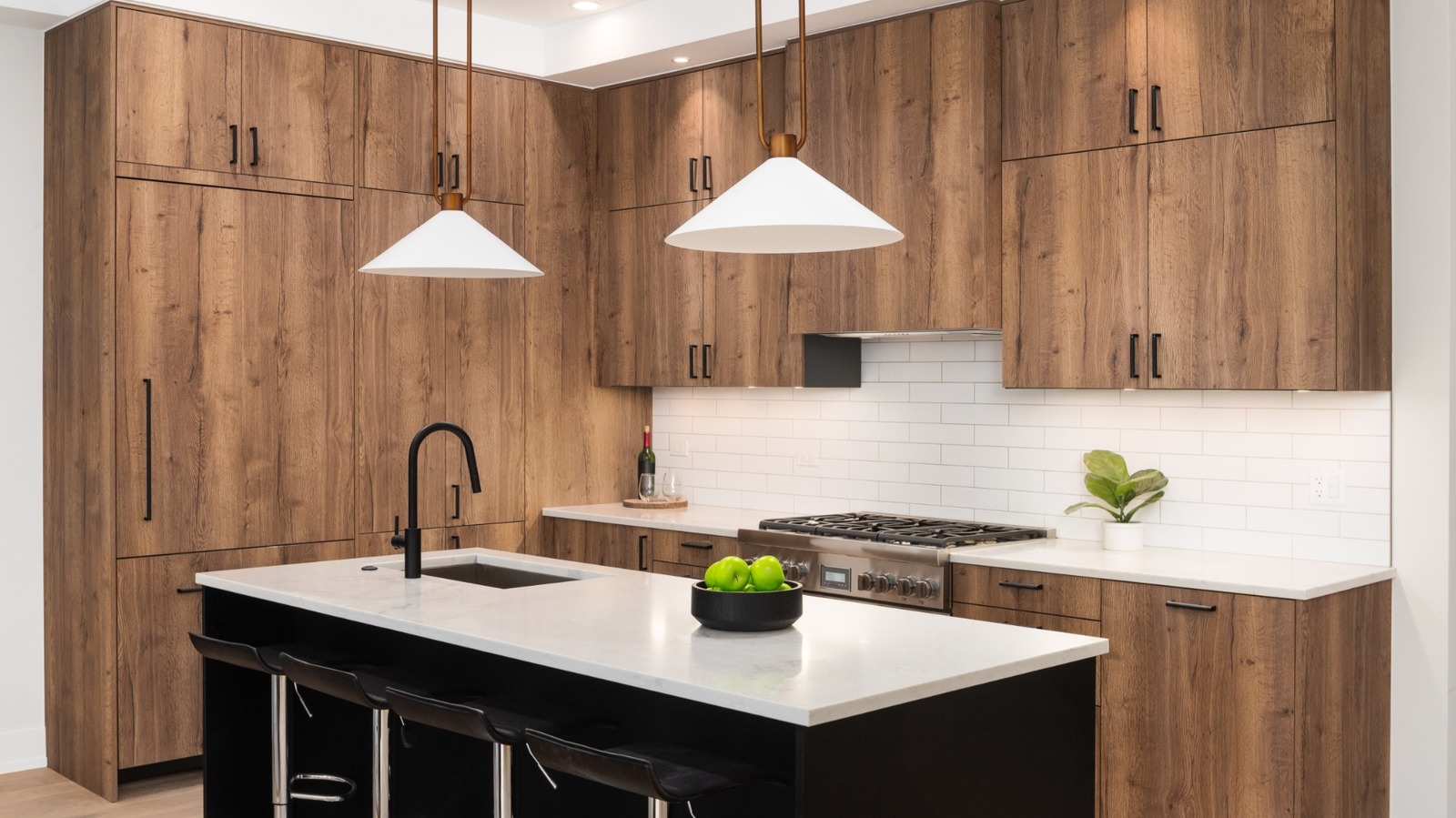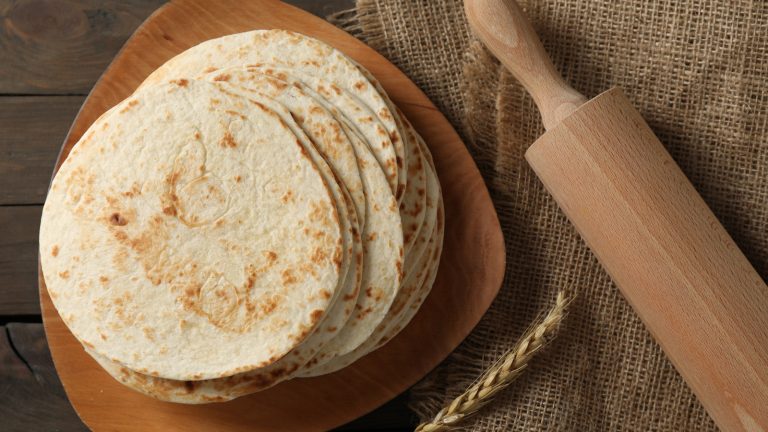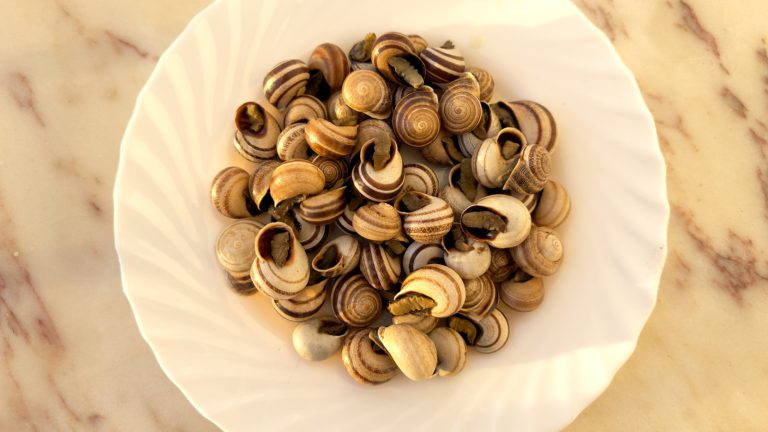We may receive a commission on purchases made from links.
Are you gearing up to address kitchen-design flaws you need to fix before selling your home? Or remodeling your kitchen to be the room of your dreams? Your cabinets are one of the biggest pieces of the puzzle. Not only are they your crucial storage system for everything from pantry items to cookware to dishes, they line your space and cover your walls, so their color and material really set the tone for your entire kitchen.
Do you want to recreate the ultimate retro kitchen? Or design a flawless minimalist kitchen? Or pursue any of the year’s best kitchen-design trends? You’re going to have to address your cabinets. And while paint might seem like a go-to for a refresh, especially if you don’t have a full renovation with all new cabinets in your budget, there are certain types of wood cabinets you should never paint. It’s important to learn what they are and how can you still update your kitchen and the look of your cabinets even if paint wouldn’t look so great or hold up well.
The types of wood to avoid painting if your cabinets are made from them include anything that is hard maple, any open-grained woods like oak, any wood that has a lot of detail or has been damaged or warped, and — plot twist — also anything that is, in fact, not wood at all, such as laminate, vinyl, or stainless steel. Let’s look at why, and what to do instead.
Maple changes with humidity
Wood is known as hygroscopic: It absorbs and releases moisture in the air, causing it to expand and contract. Paint won’t stop this from happening or hide it. In fact, it highlights it, and the changing can damage the paint. Certain woods are more susceptible to these changes, and maple is one of them. In the average kitchen’s humidity level, maple can expand or contract by a ¼ of an inch. Moisture and temperature are constantly changing in your kitchen as you cook, bake, and clean, so the humidity level will rise and fall, causing maple wood cabinets to keep slightly – but noticeably, if painted — shifting.
Maple is a hardwood that’s durable, and it’s affordable. It also comes in a range of finishes, making it easy to match with any kitchen-design motif. For these reasons, it’s not an unpopular or even ill-advised choice for your cabinets — you just can’t expect to be able to paint them. As those humidity-incited changes happen, paint will chip and flake and will generally wear faster, and not evenly, either. Maple is also known for being difficult to stain, because just like with paint, it absorbs stain unevenly so it can end up appearing splotchy. If you want wallet-friendly durability, maple makes sense, but plan on finding other ways to update your kitchen over time unless a total cabinet switch is in the cards.
Open-grained woods are too porous for paint
Open-grained woods, such as oak, are porous. Paint settles into those pores and creates an unpleasant textured look. That kind of surface also makes it hard for the paint to adhere everywhere evenly to begin with. So not only will it look bumpy, porous, and uneven, but it will also start to chip over time. The woods that tend to be more open-grained are softwoods. Think about the types of wood cutting boards worth splurging on and those you should avoid — the no-no’s are typically softwoods with pores where food gets trapped and bacteria builds.
Hardwood is hardier and more durable, coming from deciduous trees such as walnut, hickory, mahogany, beech, and balsa. As the name suggests, softwoods are literally softer and have a more natural grain pattern, and we get it from coniferous trees such as pine, spruce, redwood, Douglas fir, and cedar. You might be wondering why cabinets would be made from the less durable wood, but softwoods can look quite lovely and rustic with those grain patterns. It’s also easier to cut and shape, and is more affordable.
However, softwoods’ porosity make them a less than stellar choice for painting, as you’ll run into those texture issues and uneven adherence again. They’re also usually sensitive to moisture, too, so you’ll encounter that expanding and contracting as you would with maple. Softwoods like cedar and redwood have rich, warm hues that shouldn’t be covered up by paint, anyway, and are better updated with surrounding touches.
Highly detailed wood is prone to chipping and cracking
Kitchen cabinets might have etched patterns or carved and even gilded trims. On one hand, these can look ornate and elegant, and create a distinctive look for your kitchen. On the other hand, because they do lend themselves to such a specific aesthetic, they could begin to look dated — or you might just get tired of the bold design and want something more neutral. Painting is not the answer. You’ll want to think about other ways to downplay them that don’t involved manipulating the cabinets themselves. This is because when you’re painting wood that’s textured like that, it’s significantly more prone to cracking and chipping.
It’s tough to prime detailed wood enough for even the best quality paint to adhere evenly and then last. You could look into options like sanding textured patterns down, but it would likely require professional-level skill and you might not be able to get the wood smooth enough for painting even by hiring a pro. Detailed cabinets could also simply look strange if painted over, especially if they were originally more than one color. Easier and more sustainable changes are the better route, such as changing out knobs and drawer pulls for more understated hardware.
Damaged or warped wood is better replaced than painted
If your wooden kitchen cabinets are damaged in any way, you want to avoid painting them for the same reason as if they were elaborately detailed: The paint will adhere differently depending on where wood is smooth, warped, chipped, cracked, or splintering. You can’t get an even finish. And the paint will quickly begin to chip away itself, starting with those damaged areas. Paint is also not so good of a cover that you won’t be able to see that wear and tear — you’ll just have damaged kitchen cabinets in a different color. Arguably even more importantly, damaged wood cabinets are one of the key signs your kitchen needs a remodel.
If you’re renovating your kitchen and your cabinets are chipping, they become a priority in the budget to replace. No amount of paint will keep them from continuing to wear or improve their condition, and there’s little point in fixing up other aspects of your kitchen if such a vital element is visibly on its way out. The one exception is if you only have, say, one or two small chips and the rest of your cabinets are in mint condition, in which case you could try a DIY fix with wood filler – but still refrain from painting over this. In the case of further damage, invest in fresh cabinets and find other kitchen-design updates you can make on a tight budget.
Other cabinet types to avoid painting and what to do instead
This may seem counterintuitive after all of the non-paint-friendly wood types we’ve listed, but you also want to stay away from painting non-wood cabinets, too. Kitchen cabinets may come in materials such as laminate or vinyl, and paint doesn’t stick to those surfaces. If you do have a more tight-grained wood like walnut or beech, and you’ve really got your heart set on keeping your cabinets but changing their color, you can pull off a paint job — but be prepared to follow all of the steps properly. Invest in high-quality paint; remove your doors to paint them; remember to sand, clean, and prime them for the best possible surface with the strongest chance of paint lasting; and let them totally dry before reinstalling them.
Since there are more cases in which you wouldn’t want to paint your kitchen cabinets than cases where you would, remember that it’s actually not necessary to paint cabinets to give them a fresh makeover. When new cabinets are too pricey and painting isn’t possible, try stick-on wallpaper. It’s low-commitment and you can change it out if you want something different or it begins to peel. You can also work with stick-on tiles. Alternatively, update everything else around the cabinets. Use those stick-on wallpapers or tiles for your backsplash, or paint those less fickle surrounding walls. This will make your cabinets appear suddenly brand new.





